Blue Orchid Massage
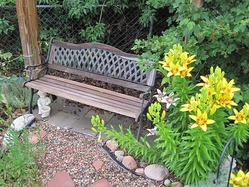 Spring has sprung and the gardens are calling! But let's not forget about our pet friends and the dangers that can be lurking in your garden. While most of these things are obvious (fertilizer, insecticides) others might surprise you (Easter lilies!) Fertilizer, insecticides, weed spray The most dangerous forms of pesticides include:
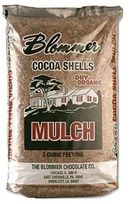 Cocoa Mulch Found in most home garden centers, cocoa mulch is known for its sweet chocolate smell and fine texture. Cocoa mulch contains theobromine and caffeine, 2 key ingredients in chocolate. From the ASPCA: What happens if a 50 pound dog eats cocoa mulch?
A 50 pound dog who eats milk chocolate:
Top Poisonous Plants
Massage therapy is one of the oldest health care practices known to history and its evolution has shaped the massage industry of today! Be sure to check out the first 11 Amazing Historical Facts About Massage 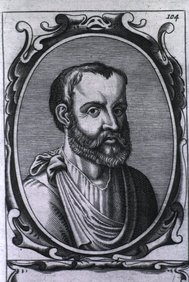 1. Galen, a notable physician to a number of Roman Emperors in the 1st century AD, could be called the father of Sports massage. Galen spent several years interning as a physician to the Gladiators of the Circus Maximus and developing his techniques. Galen wrote on the subject of massage in his book Hygiene, covering topics including details of preparatory massage, duration of massage at each stage of exercise, and how to make a great massage oil. He also reveals his disdain for those who would lower the standards of the massage profession (sexually) and lessen it's meaning and purpose. After hearing a derogatory comment about his profession, Galen wrote, “These are all wanton witticisms, not at all befitting a man learned in so august an art.” 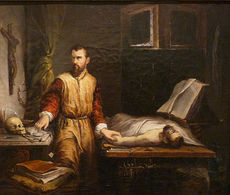 2. Ambroise Paré (1517-1590) was a French military surgeon and is considered one of the founders of modern surgery. Always willing to try new practices, Paré was one of the earliest modern physicians to discuss the therapeutic effects of massage. He classified various types of massage movements and favored massage for relieving joint stiffness and wound healing after surgery. 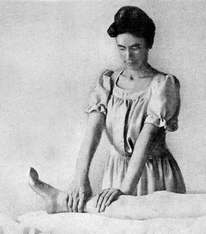 3. In the 18th century surgeons began to hire medical rubbers to help with rehabilitation, joint disease and treatment of lameness. Usually women, they had little education, but were very adept at hands-on therapy. They used simple techniques of rubbing, friction and joint movements. The medical rubbers would modify these techniques to produce different effects. Some went on to develop their own private practices independent of doctors. 4. The Society of Trained Masseuses (STM) was formed as a response to an article published by the British Medical Journal (BMJ) the summer of 1894. During the 1880's massage became an important skill for nurses. Massage courses were established by nursing schools, private schools, and internships. These courses were largely unregulated. In July 1894, the BMJ published an editorial titled 'Immoral "Massage" Establishments', claiming: "We understand that a good many 'massage shops,' are very little more than houses of accommodation (brothels).... This is so well understood that young men about town often make a tour of these establishments. Many of these girls have certificates, but they, as a rule, have spent their last penny in getting instruction, and, little by little, drift into a mode of life which is often most distasteful to them." "Our impression is that the legitimate massage market is overstocked, and that no women, unless she has a private connection, has the slightest chance of getting a living by massage alone... We are afraid that nothing could be done in the way of registration unless the ground could previously be cleared of what is undoubtedly a great social scandal." Six months later, four London-based nurses founded the STM to "make massage a safe, clean and honourable profession, and it shall be a profession for British women." They quickly worked to establish guidelines for training in the disciplines of anatomy and physiology. The Society refused to register male masseurs and discouraged contact between masseuses and male clients (unless in exceptional circumstances). 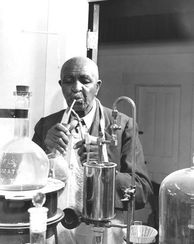 USDA History Collection, Special Collections, National Agricultural Library [Public domain], via Wikimedia Commons USDA History Collection, Special Collections, National Agricultural Library [Public domain], via Wikimedia Commons 5. George Washington Carver, "the Peanut Man", believed that peanut oil could help polio victims regain some lost function in there muscles and limbs. In the 1930's, Carver began to treat polio patients using peanut oil massages and reported positive results. Carver gifted Franklin D Roosevelt peanut oil and the President later told a scientist, "I do use peanut oil from time to time and I am sure that it helps." There was never any scientific evidence that the peanut oil was effective and it is believed that the patients most benefited from the massage treatment itself and the extra care that they received from Carver. Read More:Sources:
British Medical Journal, Immoral "Massage" Establishments (July 14, 1894) Brush Up on the History of the Massage Therapy Profession Saving the profession from scandal Ambroise Pare Biography Physiotherapy and the shadow of prostitution 7 Facts on George Washington Carver The Archetypes of Masseuse and Masseur
I’ll always remember the greatest story one of my teachers told in massage school. He had a female client who came in complaining of lower back and hip pain. He asked her to take her shoes off (heels) and walk across the room to check her gait. Her calf muscles had shortened to the point that even barefoot, she still walked like she was in heels. I decided at that point, that even though I love heels, I had to take steps to prevent the same thing from happening to me!
A Great Infographic from Live Science explaining why heels hurt.
Stretches to help when wearing heels
Achilles Tendon Stretch - 3 times a day
Lean into a wall with one foot about a foot and a half in front of the other, gently stretching the calf and tendon in the back foot; hold for 90 seconds, then switch sides.
"Alphabet exercise" - 1-2 times a day
Strengthens ankles and improves range of motion Use your big toe to trace each letter of the alphabet in cursive in the air, moving only the foot and ankle. Tips for Buying Heels that won't hurt!
|
Heather McNay
I've been a Licensed Massage Therapist since 2006. In my free time I enjoy hiking with my husband and dog. I also have a passion for cooking, baking and gardening. Archives
August 2022
Categories |
Proudly powered by Weebly

 RSS Feed
RSS Feed